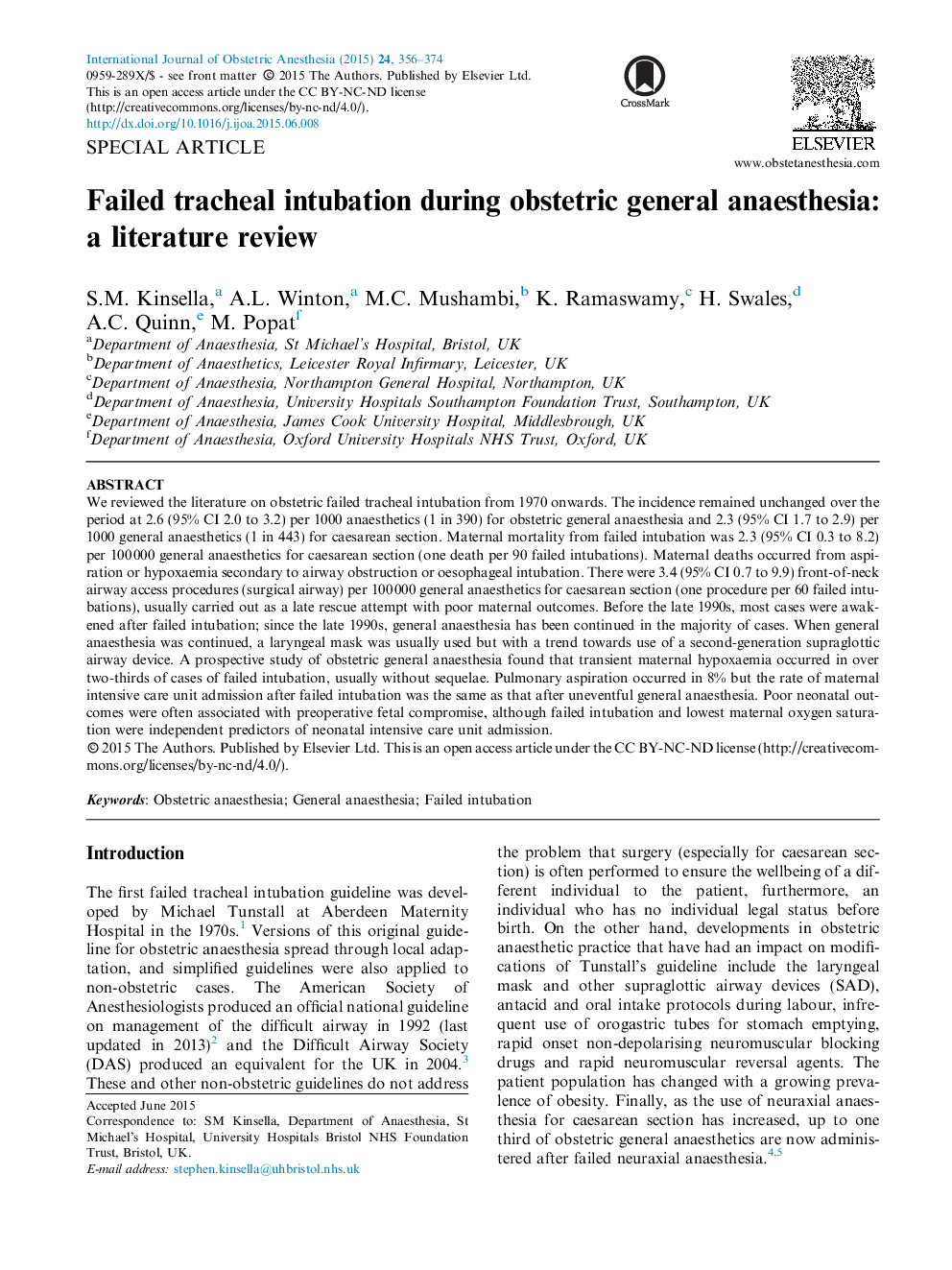| Article ID | Journal | Published Year | Pages | File Type |
|---|---|---|---|---|
| 5883262 | International Journal of Obstetric Anesthesia | 2015 | 19 Pages |
We reviewed the literature on obstetric failed tracheal intubation from 1970 onwards. The incidence remained unchanged over the period at 2.6 (95% CI 2.0 to 3.2) per 1000 anaesthetics (1 in 390) for obstetric general anaesthesia and 2.3 (95% CI 1.7 to 2.9) per 1000 general anaesthetics (1 in 443) for caesarean section. Maternal mortality from failed intubation was 2.3 (95% CI 0.3 to 8.2) per 100Â 000 general anaesthetics for caesarean section (one death per 90 failed intubations). Maternal deaths occurred from aspiration or hypoxaemia secondary to airway obstruction or oesophageal intubation. There were 3.4 (95% CI 0.7 to 9.9) front-of-neck airway access procedures (surgical airway) per 100Â 000 general anaesthetics for caesarean section (one procedure per 60 failed intubations), usually carried out as a late rescue attempt with poor maternal outcomes. Before the late 1990s, most cases were awakened after failed intubation; since the late 1990s, general anaesthesia has been continued in the majority of cases. When general anaesthesia was continued, a laryngeal mask was usually used but with a trend towards use of a second-generation supraglottic airway device. A prospective study of obstetric general anaesthesia found that transient maternal hypoxaemia occurred in over two-thirds of cases of failed intubation, usually without sequelae. Pulmonary aspiration occurred in 8% but the rate of maternal intensive care unit admission after failed intubation was the same as that after uneventful general anaesthesia. Poor neonatal outcomes were often associated with preoperative fetal compromise, although failed intubation and lowest maternal oxygen saturation were independent predictors of neonatal intensive care unit admission.
â¢We reviewed four decades of literature on obstetric failed tracheal intubation.â¢At caesarean, the failure to intubate rate is 1 per 443, 1 death per 44 100 general anaesthetics.â¢The proportion of cases where general anaesthesia was continued has increased.â¢The laryngeal mask is the preferred supraglottic device for continuing anaesthesia.â¢Failed intubation contributes but is not the sole reason for poor neonatal outcome.
